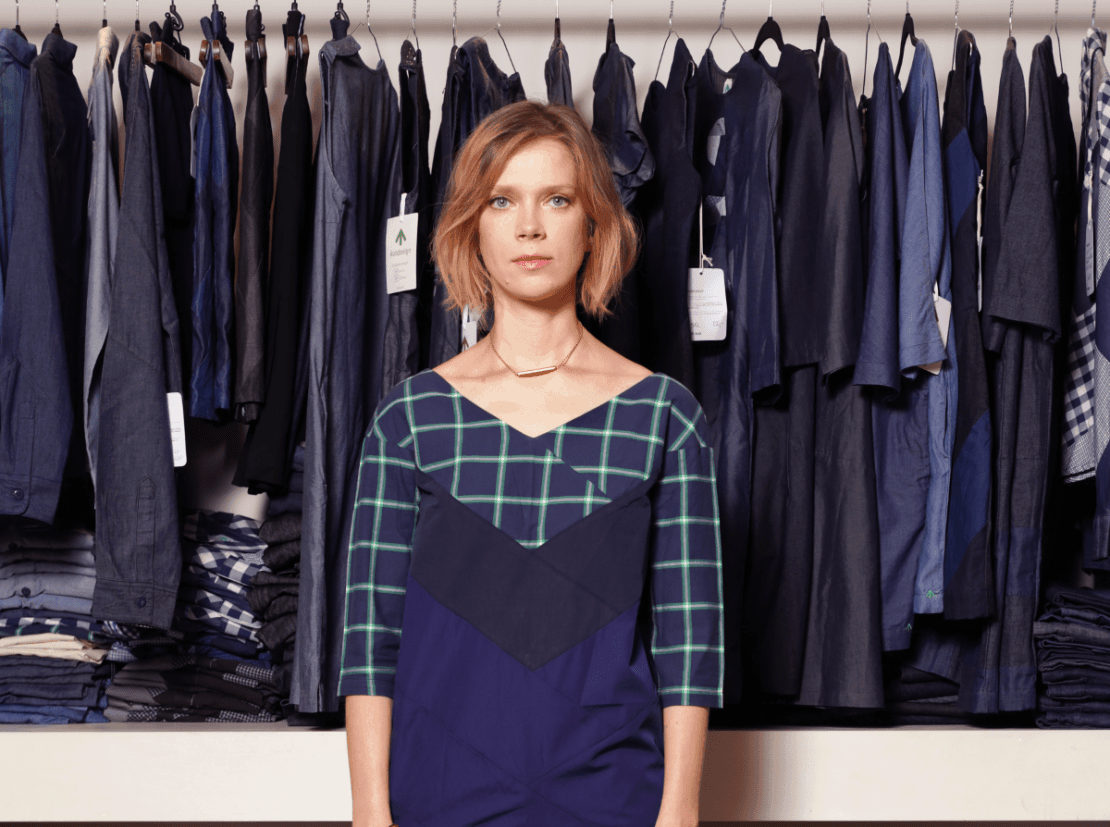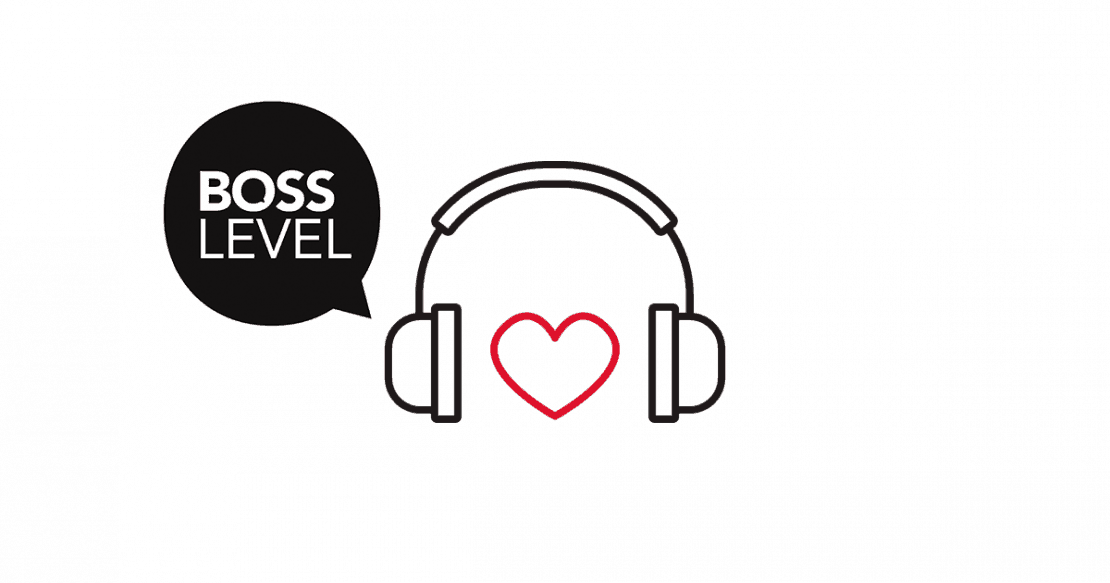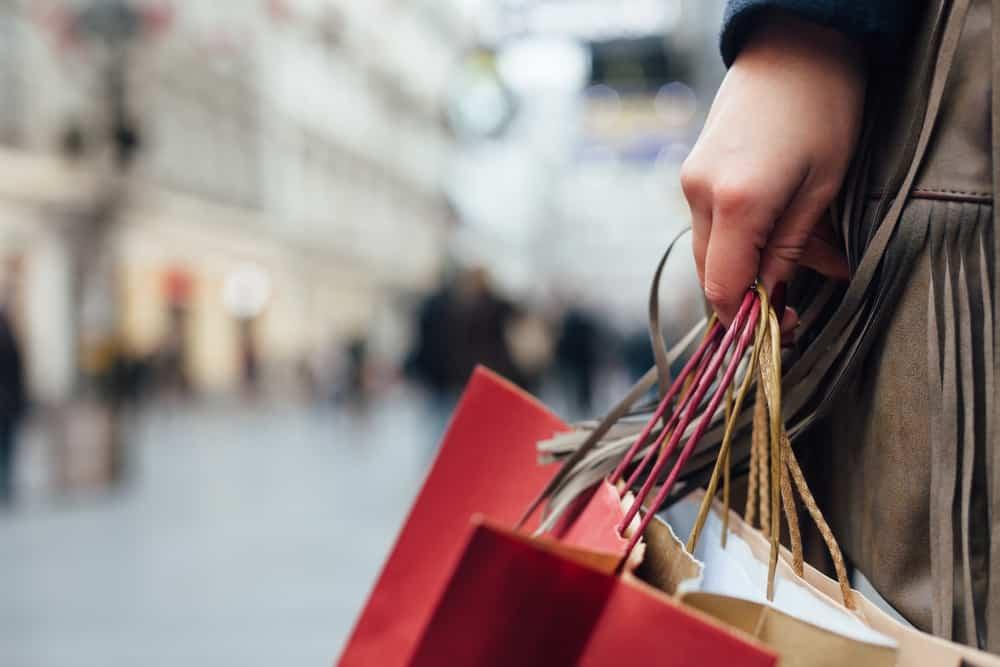31May2016
The Estonian trailblazer of trash-to-trend fashion garments, Reet Aus has been experimenting with recycling in fashion and costume design since 2005. The website of AusDesign Llc, the international sustainable design company she runs, is nothing like a conventional e-clothes shop. Or how often do you see clothing labels containing percentage-precise information on water and energy savings?
Nordic Business Report: The items you are offering are quite extraordinary in terms of the names and label descriptions. For example, the label on the Up-shirts says “No new fabric is produced to make these shirts. Each T-shirt saves on average 91 percent water and creates 85 percent less CO2 emissions.” How were they able to assess these percentages so precisely? Is this the future of the clothing labeling?
Reet Aus: The method we were applying is called LCA, or Life Cycle Analysis, which has been approved by the Swedish Environment Institute’s Tallinn center. All the labels on our clothing have information on water and energy savings, as well as carbon dioxide emission cuts as a result of eco-manufacturing.
The ambition striving me forward during the last three years has been to develop an upcycling method that could be used in global mass production to reduce industrial waste by implementing it in a smart, transparent, and credible manner. Traditional manufacturing creates on average 18 percent of pre-consumer textile waste according to our estimates.
Following the principles of upcycling, a certifiable UPMADE® method has been developed to turn your leftovers into valuable products, eliminating waste and preceding recycling practices in mass production.
Reet Aus collections, using the UPMADE® method, is in early stages of the mass production process. This has improved effectiveness and reduced environmental impacts. Each item produced uses on average 70 percent less water and 88 percent less energy compared to a regular product.
NBR: How did this endeavor begin?
RA: The whole idea started a few years ago when I was still working on my doctoral degree in art and design, “Trash to Trend – Upcycling in Fashion Design” at the Estonian Academy of Art in 2011.
The HULA Collection, created along with the fashion designers Anu Lensment, Marit Ahven and Eve Hanson as their final Master’s project, put forward the idea of local production and it quickly found popularity as a recognized brand created by fashion students.
But frankly speaking, I still did not have a clear idea back then of what I really wanted. One of the first things I did was to map out the Baltics and see what country does what with discarded materials and waste. In the West, these things are no longer a problem, but over here some problems still remain. Then I did some thorough searching on the internet, looking at what small, studio-based trash-to-fashion ecology-minded fashion designers do. So, like the rest, I started off from a small fashion studio before taking it further.
NBR: It took a long time before starting your own company AusDesign, isn’t that so?
RA: Indeed, there was the platform “Trash to Trend” first, a team of like-minded people who created an NGO aiming to bring more eco-awareness and change in the way people in Estonia and in the region comprehend waste and its use. The website of the platform, www.trashtotrend.com, is still running and I am proud of being listed as its founder. For me the whole thing about turning trash into fashionable items is more about the method, or technology, to create software that monitors leftovers from production and how they can be turned into something nice and trendy. In fact, we are already using our own software that gives us a precise assessment of the environmental impact that the clothing manufacturing requires.
NBR: Who in your family do you credit most for the values and understandings you have today?
RA: I am grateful for being brought up by an art-loving family. My mother was a textile artist and my grandfather was a sculptor. They both would spend hours working away on their passions in a tiny studio. He’d be keen on collecting all usable leftovers, especially those from textiles, and would use them for his craftsmanship. He is the one I credit the most for nurturing my belief that manufacturing leftovers can be recycled, reused, and given new life.
As some other members of my family come from the rural countryside Saaremaa, a beautiful lush island to be exact, nature played an important role in my youth. To tell the truth, it still does, although I now live in the capital, Tallinn. Perhaps because of my upbringing I have always been very keen on learning the true value of things, including the manufacturing of clothing. Because I do think of the impact that manufacturing has on nature. And I want my clients to feel a connection with the garments they wear. Honestly, I cannot accept a shopping culture when a garment is bought for €3 before being quickly discarded without a thought about what it actually meant to the owner. I want my clothes to mean something for the people wearing them wherever they are!
NBR: Are you eco-conscious in your living environment as much as you are in your business?
RA: Oh yes, I am very pro-ecology and sustainability in my daily life. I am a vegetarian. I don’t drive a car and I love cycling. You won’t see me in conventional supermarkets as I use only eco-certified goods and services. I am the very same person in my daily life as I am in the AusDesign office in Tallinn. If I didn’t practice what I preached in my daily life I’d sound very ambiguous and stupid.
NBR: The usual stereotype of a strong businesswoman is that they are very tough, blunt and profit-oriented. That’s clearly not you. Do you often hear this remark? Do you consider yourself a good businesswoman?
RA: (Grins). First and foremost, I think of myself as a designer. But my status as the owner of a company perhaps makes me a businesswoman. I am not very fond of the word, to be honest. I see myself as a very practical person, the trait that defines me the most in whatever I do in life, and in the business too. I might not sound tough, but I do like taking risks as a matter of fact. Finding solutions and getting things moving forward has been part of my daily activities for quite some time now. It makes me even stronger.
NBR: Which activities do you find to be the most enjoyable and rewarding?
RA: Frankly, I could not single out any of them. The bottom line is how well you do things that you enjoy being involved with. That’s the most important thing for me to tell the truth. But as a designer, I exercise holistic thinking, which is all about how to make the place better and how to strike a balance between Mother Nature and the clothes wearer, especially in a society of mass consumption. I really am very much into scrutinizing of things and looking for new solutions. This is the biggest part of me.
NBR: How many people do you employ?
RA: Our company is very small, in fact, just four people are on the payroll. The bulk of our manufacturing is outsourced in Bangladesh. In the Tallinn office, we just do the sampling, designing and bookkeeping.
NBR: Running a garment factory in Bangladesh, which is notorious for child labor, you are certainly very much cognizant of the issue in the country. Have you made sure that the factory you run does not exploit children?
RA: Our factory is certified internationally as a child labor-free enterprise. The widely held belief that is plaguing Asia, including Bangladesh, that the entire manufacturing industry is built on child labor is wrong. As elsewhere in the world, and Bangladesh is no exception, there are good and bad factories. The attitude of the owner of a plant is crucial as to how the atmosphere of manufacturing is conducted. Believe it or not, I know every single person working for us in our factory line.
NBR: Are you planning on expanding AusDesign, and if so in what direction?
RA: The expansion is a healthy thing in the clothing business and we are looking forward to ramping up our sales in Europe, Germany first of all. At the moment, we are working on certification procedures with three major names, two in the US and the third operating mostly in Europe. I cannot disclose who they are as negotiations are not over yet. If all plans work out, we will be able to reduce their textile leftovers a staggering average of 52%.
We already have under our belt contracts with the furniture manufacturer Softrend, which creates upcycled sofa cushions and other upcycled products for their upholstered product lines, and Beximco, one of the biggest apparel manufacturers in Bangladesh producing over 200 million garments every year. Their traditional production practice creates on average 15 percent waste. It produces clothes for such world-famous brands as Tommy Hilfiger, Bershka, Calvin Klein and Zara, companies that guarantee human rights and decent salaries. I was able to analyze the production at the factory, which helped assess the extent of waste and create opportunities to direct it back into production within the factory. We are looking forward to doing business with other eco-friendly companies, too.
Most recently, we have started UPMADE certifying process with Sangar, a family-owned company founded in 1956, specializing in button shirts.
NBR: Are you looking for advice and expertise in pursuing your eco clothing projects?
RA: I am, as a matter of fact. As I felt the need for more specific environmental know-how, this has brought me together with the Estonian environmental specialist Markus Vihma. Our collaboration has led to the creation of an UpShirt, “T-shirt with the smallest environmental footprint in the world”.
NBR: How do you describe your clientele? Who is the buyer?
RA: Anyone who cares about the environment and the footprint we are leaving on it on a daily basis. Age-wise, they are not youngsters, with most in the range from 25 to 50. What is going on the in the world, especially on the subject of climate change, does matter to our buyers.
NBR: Are your fellow Estonians fond of AusDesign products?
RA: They really are! Last year we experienced a quite steep growth in sales. This is not surprising, as Estonians tend to be very eco-savvy, as with all the Nordic countries to tell the truth.
NBR: What about the prices of your garments? Logically, they should be high due to the peculiarities of manufacturing.
RA: No, not at all! Our price range is, in fact, lower than the average price of production of this kind.
NBR: What is your prediction for how fashion will look in 50 years from now, in 2066?
RA: Oh, it will be very different from what we see now. The pace that fashion is galloping is astonishingly rapid, even compared to what was happening just 10 years ago. Even in 10 years time it will be perhaps unrecognizably different. Just because of the growing shortage of land where textile materials can be grown. The once vast fields of cotton in Asia are shrinking, a result of an exacerbating water problem. So we have a resource problem. Then there is climate change, which for business means higher taxes and which, importantly, makes us think of new ways to change attitudes towards consumption. If we want to stop it, we need to make manufacturing sustainable.
NBR: What material do you believe will prevail in fashion in 50 years time?
RA: I think a lot more man-made fibers will be available. I’d bet a bright future for bamboo. It grows very fast and the resources are vast although still relatively untapped. The future of hemp, fashion-wise, looks pretty good to me, too. The recycling of materials and waste will be the most widespread practice in 50 years time. No doubt about it.
I believe that countries that are smart with energy use and water resources have the best future in clothing design and fashion. Both are very much intertwined. That the Earth is in serious trouble is understood not only by environmentalists but countless ordinary people as well.
NBR: Which is your best-seller and why?
RA: What I call arrow shirts are flying off the shelves now. The name is such because the sign of arrow points upwards on the shirts.
I can only guess why they are so popular. The symbol of an arrow is very simple, indeed, but it means a lot to me as the logo of our company. It embodies the whole concept of our clothing line which is all about upcycling and upmade. Perhaps that’s why. An arrow pointing upward means eternity, cosmos if you want to put it that way.
NBR: How tough is competition within the upcycled clothes market?
RA: The sustainable design market is totally different from the conventional clothing market. The upcycled clothing market is pretty small. The vast majority of the collections in the segments are based on organic materials. But when it comes to the upcycling-based clothing market, there are quite a few established brands like ours.
Not meaning to brag or anything, but AusDesign is probably the only upcycled clothing brand that produces on an industrial level and that has become a household name for many.
The business is very peculiar. It has to be extremely transparent from a to z. Therefore, there are heaps of all kinds of certifications that are needed for the business. To wrap it up, it’s a very time-consuming and expensive entrepreneurial activity where the word “compromise” simply does not exist. It’s a business where the buyers tend to fire lots of questions at you, even very weird ones, and you cannot start stammering and gasping when answering them. Otherwise, your business can be ruined.
NBR: Being a fashion designer, scholar, and public activist undoubtedly makes you an exemplary role model for many women. Are you comfortable with this role?
RA: To be honest, I do not think about it at all. I start nearly every day making porridge for my kids and then I take them to school. It’s part of being a mother and I feel fine about it. Only after I see my children off to school do I rush to the office. My motherly instinct always makes me look at the clock as at 5pm I have to be back at school to pick up my 16-year-old daughter Niina and my son Artur, who is eight. And then there’s the little toddler, Karl, who requires attention the most at the moment. I am living a very down-to-earth and ordinary life. I am really of no use for a big role. My holistic approach makes me move forward. Family is without doubt Number 1 thing in my life. After that comes learning and curiosity.


